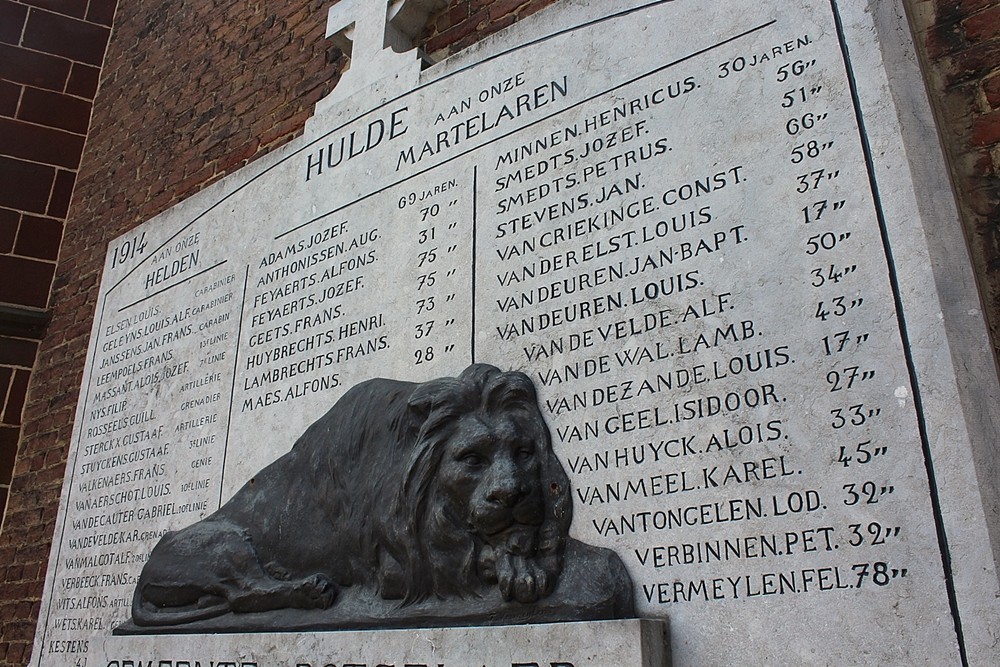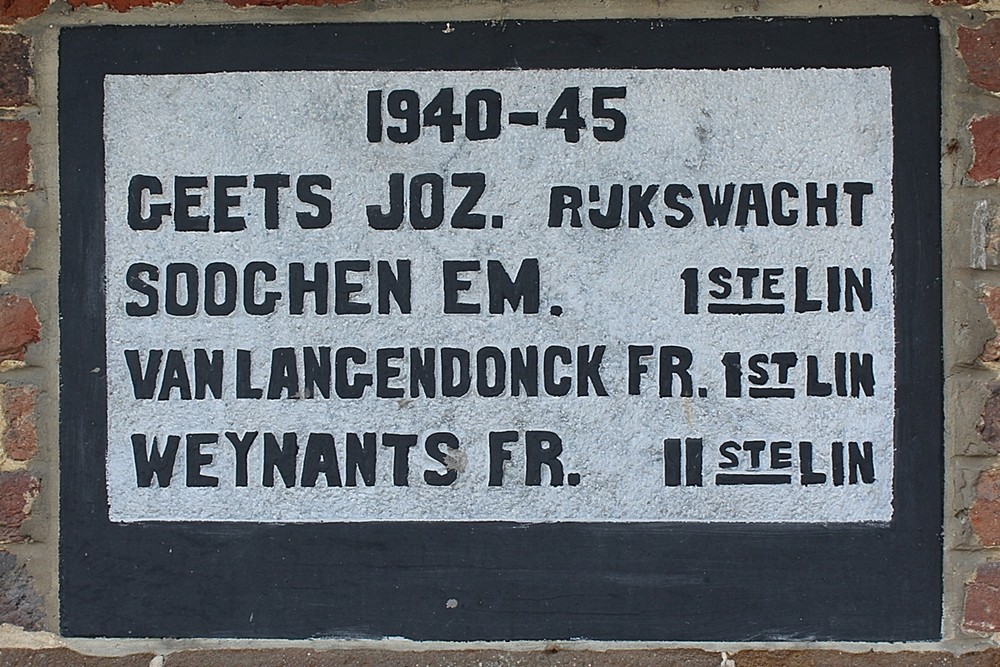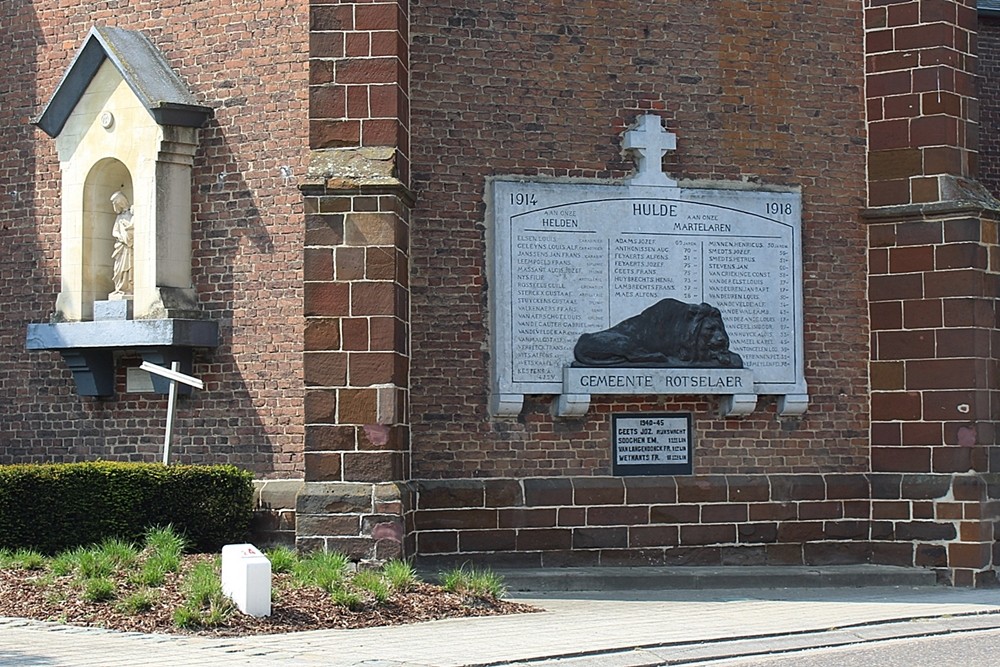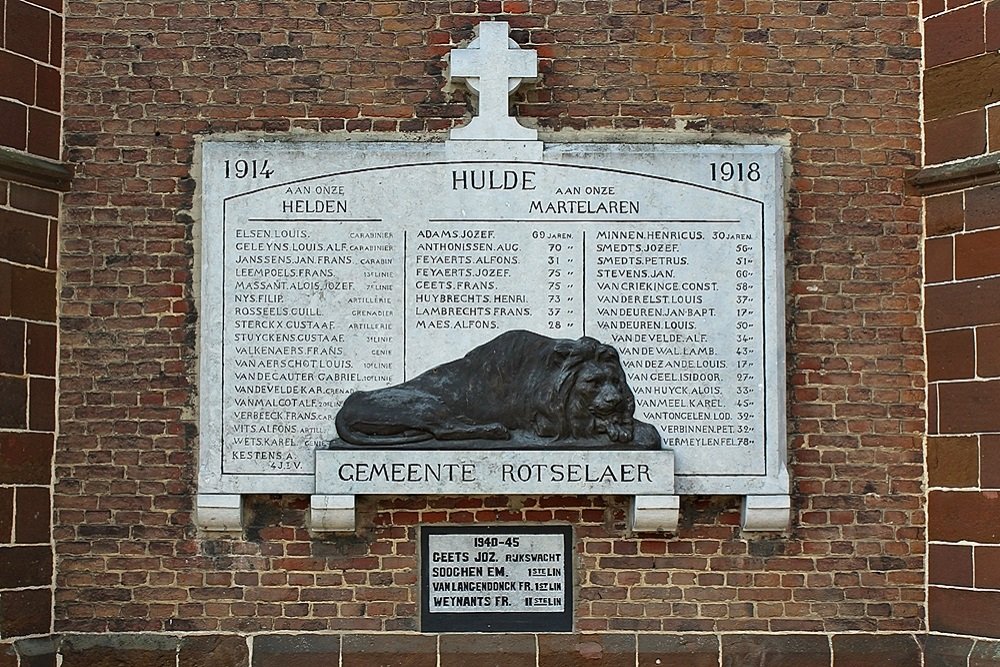War Monument Rotselaar
War Memorial Rotselaar
On the outside of the choir of the St. Peter's Church in Rotselaar is the war memorial for the civil and military victims of both world wars. The World War I memorial was solemnly inaugurated as early as 1919 through the concerns of the "Church Factory". It contains the names of 18 killed soldiers and 25 murdered civilians.
Remi Wouters, parish priest of Rotselaar, left an extensive report. Although not all figures are correct, this account gives us a compelling picture of the facts. According to the priest, 153 soldiers were mobilized in this village and he is unaware of the number of volunteers who later joined the Belgian army.
On the morning of August 19, 1914, the nearby Aarschot was taken after heavy fighting. The last Belgian troops withdrew from Rotselaar around 2 p.m. and the German soldiers arrived in the village around 4 p.m. The parish priests and the mayors of Gelrode and Rotselaar were held hostage in the presbytery until the next day. Houses were looted and set on fire. In search of weapons, even the altar in the church was broken open. On August 21, the population who had been hiding in the area returned. The night of Saturday 22 to Sunday 23 August, the male population was locked up in the church. On August 24 and 25, the Belgian army made its first withdrawal from the fortress of Antwerp. The inhabitants, irrespective of sex now, were reunited in the church. Residents of the nearby municipalities of Wijgmaal, Herent and Wakkerzeel were also imprisoned. In those first days, according to Father Wouters, 64 houses were reduced to ashes and 22 men were shot. On Thursday, August 27, in the afternoon, men, women and children, under German force, started the long hike to Leuven in the scorching sun to be put on the train and taken to Germany. Part of the population was already reduced after the stop in Cologne. However, according to the parish report, about 120 men stayed in the concentration camps of Soltau and Munster for four to seven months. 69-year-old city councilor Adams Joseph was stamped to death. At the end of August, the villages of Groot-Rotselaar were up to 90% depopulated: deported or on the run. As a result, there were few civilian casualties during the Second Fall, during which particularly fierce fighting took place at the Molen (Rotselaar). Eight more houses went up in flames. Only when the fortress of Antwerp fell did some of the inhabitants return in October. During the war many stayed in France, the Netherlands and especially England.
To commemorate the Second World War, a simple stone with the names of the victims was placed under the monument of the First World War.
Do you have more information about this location? Inform us!
Source
- Text: Jan Rymenams
- Photos: Jan Rymenams
- CASTEELS, R., VANDEGOOR, G. en MINNEN B., 1914 in de regio Haacht, Kleine dorpen in de grote oorlog, 1993
Nearby
Point of interest
Monument
- Via Dolorosa 1914-2014 and Memorial Joseph Boden - Rotselaar
- Memorial Lieutenant Werner de Bavay - Rotselaar
- War Memorial Battle of the Mill Rotselaar - Rotselaar
Cemetery
- Belgian Graves Veterans Wakkerzeel - Wakkerzeel (Haacht)
- Belgian War Grave Wakkerzeel - Wakkerzeel (Haacht)
- Belgian Graves Veterans Wijgmaal - Wijgmaal (Leuven)
Remembrance Stone
- Stumbling Stones Martelarenlaan 179 - Kessel-Lo (Leuven)
- Stumbling Threshold Naamsestraat 73 - Kessel-Lo (Leuven)
- Stumbling Stones Koning Albertlaan 108 - Kessel-Lo (Leuven)
Fortification
- KW-Line - Bunker H14 - Wakkerzeel (Haacht)
- Kw-Linie - Bunker A2 - Tildonk (Haacht)
- KW-Line - Bunker A1 - Wakkerzeel (Haacht)







